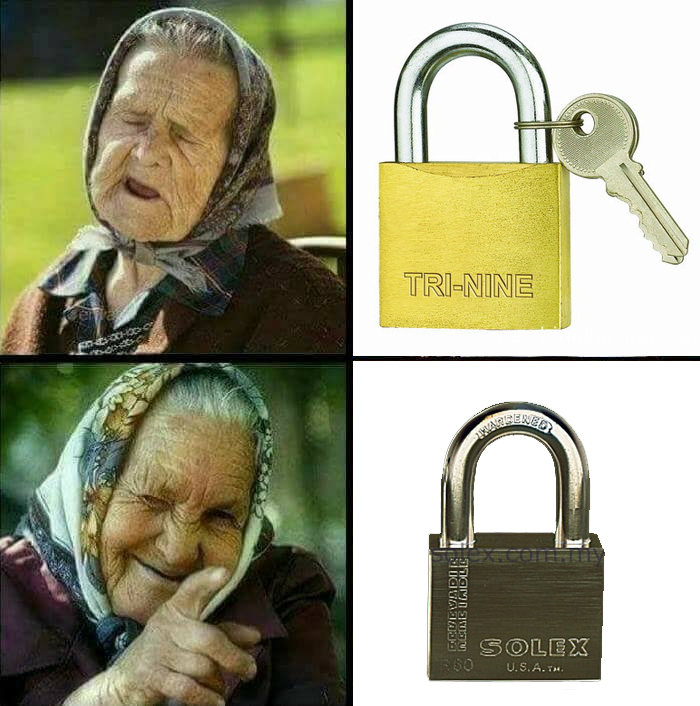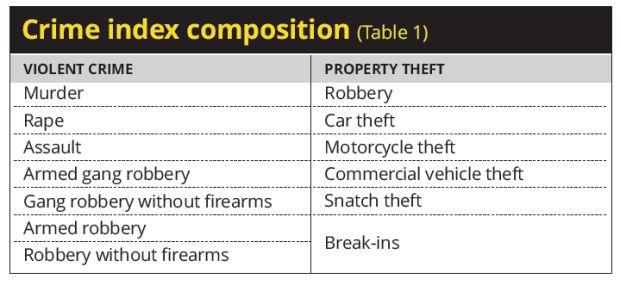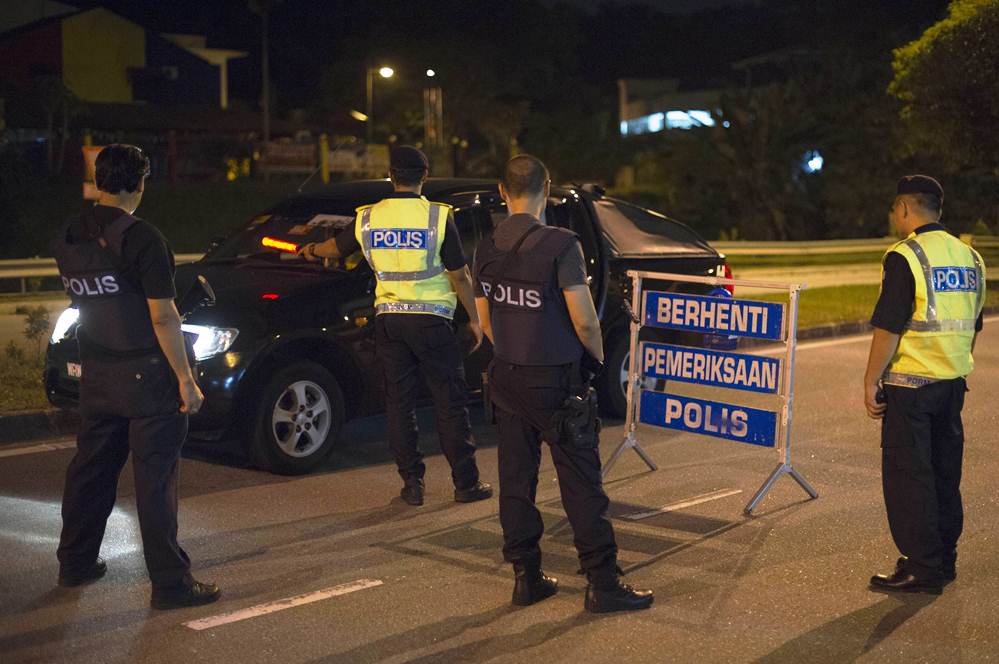PDRM says that Malaysian crime rate has significantly dropped. How did they achieve this?

- 645Shares
- Facebook555
- Twitter8
- LinkedIn8
- Email36
- WhatsApp38
Are you afraid of crime?
Before you answer, you should consider these questions.
- Have you locked all the doors and windows to your house this morning?
- When moving to a new house, do you insist on having grilles installed on all the windows?
- Do you always put on a steering lock when you park your car? Or install an alarm for your motorbike?
- Do you periodically tap on your back pocket to make sure your wallet is still there in crowded places?
- Do you insist on using a specific type of padlock?

If you answered ‘yes’ to any of the questions above, you should know that you’re not alone. In 2016, Deputy Prime Minister Datuk Seri Dr Ahmad Zahid Hamidi quoted a study by the Performance Management and Delivery Unit (Pemandu), saying that 61% of Malaysians fear crime. The year before that, fear of crime among Malaysians was at 80%.
He had last year assured the public that the crime index had fallen by 47% since the government’s introduction of the Crime Reduction Initiatives under the Government Transformation Programme (GTP) six years ago. However, he also acknowledged that despite crime having basically reduced to half, the public’s view of crime in Malaysia stayed pretty much the same as they are still skeptical of the government’s data and initiatives.
“The public should not only be safe, but they need to feel safe at the same time and this is a very big challenge for the government because the public doubts the data given by the police and the government,” – Datuk Seri Dr Ahmad Zahid Hamidi, for the Sun Daily.
A 47% reduction in crime rates does seem too good to be true, but is there a solid reason for the public’s doubt? For one thing…
The data that shows declining crime rates may be incomplete
We did a little digging, and we found the statistics on Malaysia’s index crimes on data.gov.my. We plugged the total crimes for the past six years into Excel and came up with this:

From this, we can say that Zahid Hamidi’s statement about crime levels going down by 47% in the past six years is generally true. The statistics used, however, only include index crimes, a set of crimes used to gauge how much crime is happening within an area. Different countries use different crimes as their index, and for Malaysia the index crimes are:

So when crime rates are said to go down in Malaysia, it doesn’t include other crimes like prostitution, gambling, drug abuse, vandalism, embezzlement and basically anything that’s not one of these 13 crimes. Also, the numbers found on this dataset only include crimes reported to the police, which means that besides leaving out non-index crimes, it also leaves out unreported crimes. Dr Amin Khan, the Director of Pemandu’s Reducing Crime NKRA had put down the number of unreported crimes to be around 25% through a survey done by his department. This unreported number is known as the ‘dark figure‘, and different categories have different dark figures due to certain circumstances.
For example, the most commonly committed crime throughout the years is motorcycle theft, with 34,754 cases recorded in 2016. By comparison, there’s only 1,887 reported cases of rape in the same year, and only 456 murder cases. In the case of motorcycle theft and other property crimes, victims are compelled to make a police report so that they can claim damages from insurance. For other cases, however, victims may not lodge a report, either because they consider the crime a private/personal matter, they fear reprisal, or they think that it’s not important enough.

So we know that the data used may not be very accurate, however the trend should still be generally going downwards due to the nature of index crimes. According to the PDRM, these crimes are chosen because they are normally reported and have weight as indicators on the level of crime in an area, meaning that they’re the bulk of crimes recorded by the police.
In short, unreported crimes and non-index crimes aside, there’s a big chance that index crime rates have really been on the decrease these past few years.
So how are the police reducing crime so rapidly?
Earlier, we mentioned Datuk Zahid Hamidi as quoting that the crime rate had gone down since the introduction of the Crime Reduction Initiatives under the Government Transformation Program (GTP), but what’s that? Basically, it’s something the government introduced to catch up with the Vision 2020 deadline, and it aims to transform the government into an ‘efficient and rakyat-centered institution’. There are seven National Key Results Areas (NKRA) that measure the success of the plan, and one of them is reducing crime.
We’ve showed you the trend of crime since 2010, but let’s back up a bit and go all the way back to 2000.

We’ve highlighted 2009 not just because that’s where crime started going downhill, but that’s also the year the GTP was launched. Whoa, that’s quite a steep drop! What the hey have the police been doing?
For starters, you might remember our article from last week where the police were organizing courses for resident associations to lower the crime rates in certain neighborhoods. This is part of the GTP plan for crime, conceived from studying cases from other countries who have successfully reduced crime like the UK and the USA, as well as through discussions with 30 other ministries and agencies to set targets on reducing crime and come up with strategies on how to achieve that. You might have noticed or seen a few of their new strategies being put in action already:
- Employing stakeouts at parking areas to catch car and motorcycle thieves red-handed.
- Increasing police omnipresence, which basically means placing police officers in crime hot spots to reduce street crime.
- Putting up CCTVs to deter criminals and identify offenders.
- Partnering up with other relevant bodies through the Safe Cities Program (SCP).

There are actually more initiatives under the plan, so if you want to read about all of them, you can follow this link (PDF).
However, the rapid decrease in crime rate led to allegations that the data had actually been tampered with. Back in 2012, a letter by someone claiming to be a veteran cop made its way through Malaysian news sites. Besides explaining what index and non-index crimes are, among other things, the letter alleged that the police had been manipulating index crime statistics to keep up with the KPI of reducing crime by 5% each year.
This was done either by referring multiple cases under one single case, not opening up investigations for certain cases and shifting index crime cases into different categories not reflected in the statistics. The police had since denied these allegations, and explained it in length in an article that you can find here. However, the public wasn’t convinced.

This may be part of the reason why…
Malaysians still fear crime even though statistics showed that it’s safer

Datuk Zahid Hamidi had said last year that the public perception towards police and crime reduction is still not as positive as it should be.
“The Royal Malaysian Police is acknowledged as the best in Asean. This is an international recognition but not the general perception. My estimate is that only 20% are positive about the police,” – Datuk Seri Dr Ahmad Zahid Hamidi, for the Malaysian Insight.
He had said that this is due to the perception of the public, and he may be right. Amin Khan recounted a survey done by Frost & Sullivan in 2014 where they asked Malaysians what they thought the crime levels have been for the past three years. Of the people surveyed, half of them guessed that it went up, and another 40% guessed that there’s no change. Only 10% answered correctly and said that the crime rate had went down.

This gap between the statistics and the public’s perception is called the ‘reality-perception gap‘, and it’s not an exclusively Malaysian thing. For example, a 2013 study by an independent think tank called the Pew Research Centre found that 56% of Americans believed (incorrectly) that gun crime is higher now than two decades ago, and only 12% believed the opposite. A 2014 study from Australia’s Griffith University even found that the reality-perception gap is widening, as crime rates fall faster than the public’s perception of it.
The Inter-American Development Bank suggested that this is in part because of bias caused by the media: crime almost always makes the news, while improvements on the public’s safety are rarely reported. Plus, they’re not as emotionally stimulating as news of crime, meaning that people are less likely to recall and spread them. Their study on the people of Colombia had found that exposing the public to positive information about the police and crime rates improved their perception of crime, but only if the information is seen as objective, credible and transparent.
Zahid had since suggested several ways to restore the confidence of the public in the police and their own safety, including engaging the public and NGOs in town hall meetings, asking the police to be friendlier when dealing with the public, and asking NGOs to correct the public’s negative perception. However, as the vice-chairman of the Malaysian Crime Prevention Foundation (MCPF) had suggested, the crime statistics issued by the PDRM should be audited by an independent body to prevent its accuracy from being disputed or twisted by any party.
So, knowing what you know now, do you trust the statistics?
- 645Shares
- Facebook555
- Twitter8
- LinkedIn8
- Email36
- WhatsApp38



